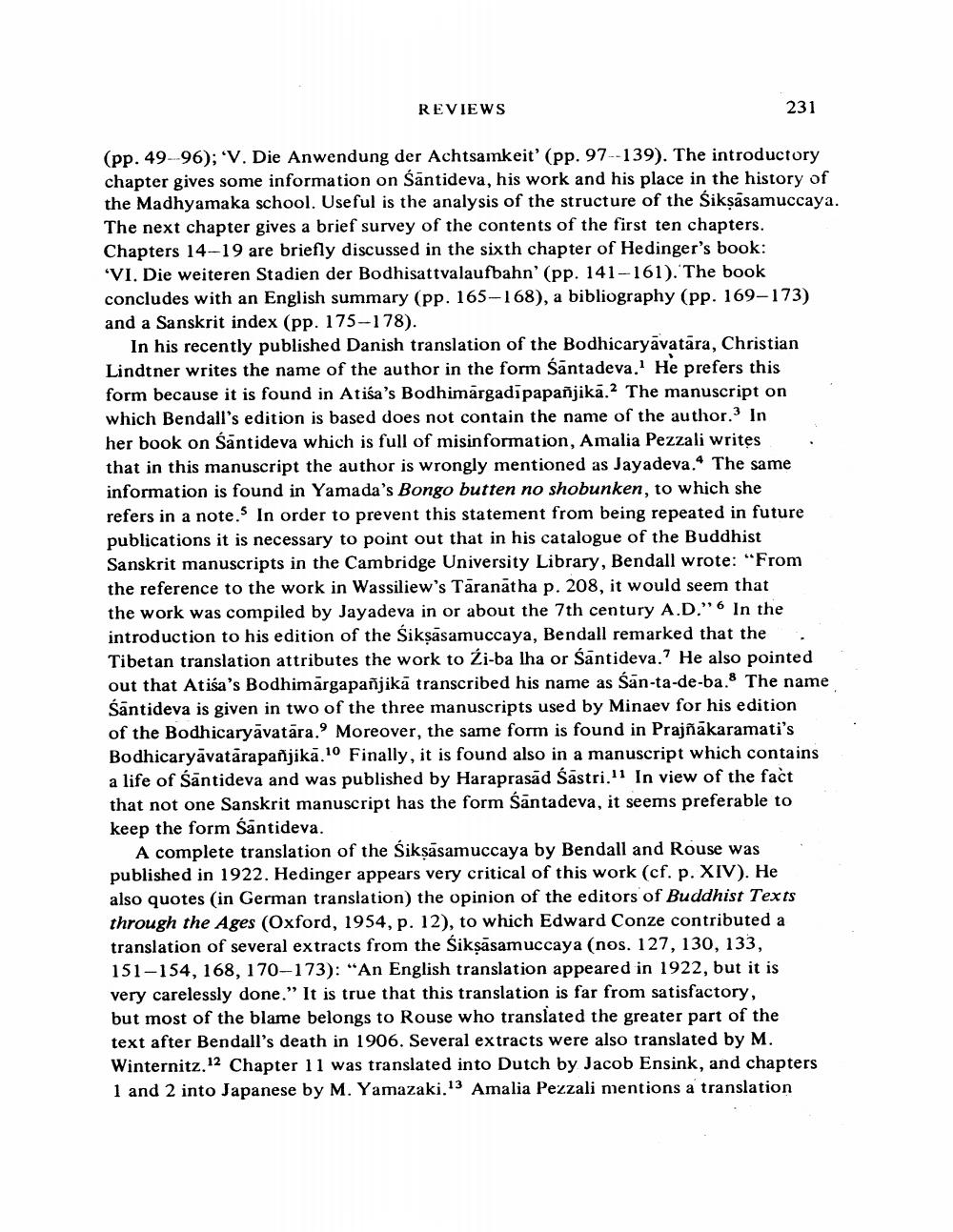________________
REVIEWS
231
(pp. 49-96); 'V. Die Anwendung der Achtsamkeit' (pp. 97--139). The introductory chapter gives some information on Santideva, his work and his place in the history of the Madhyamaka school. Useful is the analysis of the structure of the Sikşasamuccaya. The next chapter gives a brief survey of the contents of the first ten chapters. Chapters 14-19 are briefly discussed in the sixth chapter of Hedinger's book: "VI. Die weiteren Stadien der Bodhisattvalaufbahn' (pp. 141-161). The book concludes with an English summary (pp. 165-168), a bibliography (pp. 169-173) and a Sanskrit index (pp. 175-178).
In his recently published Danish translation of the Bodhicaryavatara, Christian Lindtner writes the name of the author in the form Santadeva. He prefers this form because it is found in Atiśa's Bodhimärgadipapanjika.2 The manuscript on which Bendall's edition is based does not contain the name of the author. In her book on Santideva which is full of misinformation, Amalia Pezzali writes that in this manuscript the author is wrongly mentioned as Jayadeva." The same information is found in Yamada's Bongo butten no shobunken, to which she refers in a note. In order to prevent this statement from being repeated in future publications it is necessary to point out that in his catalogue of the Buddhist Sanskrit manuscripts in the Cambridge University Library, Bendall wrote: “From the reference to the work in Wassiliew's Taranatha p. 208, it would seem that the work was compiled by Jayadeva in or about the 7th century A.D." 6 In the introduction to his edition of the Sikşāsamuccaya, Bendall remarked that the Tibetan translation attributes the work to Źi-ba lha or Santideva.? He also pointed out that Atiśa's Bodhimärgapañjikā transcribed his name as San-ta-de-ba.8 The name Santideva is given in two of the three manuscripts used by Minaev for his edition of the Bodhicaryāvatāra. Moreover, the same form is found in Prajñākaramati's Bodhicaryāvatārapanjika.10 Finally, it is found also in a manuscript which contains a life of Santideva and was published by Haraprasad Sastri.' In view of the fact that not one Sanskrit manuscript has the form Santadeva, it seems preferable to keep the form Santideva.
A complete translation of the Siksāsamuccaya by Bendall and Rouse was published in 1922. Hedinger appears very critical of this work (cf. p. XIV). He also quotes (in German translation) the opinion of the editors of Buddhist Texts through the Ages (Oxford, 1954, p. 12), to which Edward Conze contributed a translation of several extracts from the Sikşāsamuccaya (nos. 127, 130, 133, 151-154, 168, 170-173): "An English translation appeared in 1922, but it is very carelessly done." It is true that this translation is far from satisfactory, but most of the blame belongs to Rouse who translated the greater part of the text after Bendall's death in 1906. Several extracts were also translated by M. Winternitz 12 Chapter 11 was translated into Dutch by Jacob Ensink, and chapters 1 and 2 into Japanese by M. Yamazaki.13 Amalia Pezzali mentions a translation




